What is a Chatbot?
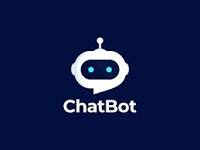
A chatbot is a computer program that simulates human interaction with an end user. While not all chatbots are equipped with artificial intelligence (AI), modern chatbots use conversational AI techniques such as natural language processing (NLP) to understand user questions, and answers to questions are becoming increasingly automated.
At the most basic level, a chatbot is a computer program that simulates and processes human conversations (written or spoken), allowing humans to interact with digital devices as if they were communicating with a real person. Chatbots can be as simple as a rudimentary program that answers a simple question with a one-line response, or they can learn and evolve as they collect and process information to provide higher levels of personalization. Some are as sophisticated as digital assistants.
The value of chatbots

Chatbots make it easier for users to find information by quickly responding to questions and requests through text input, voice input, or both, without the need for human intervention or manual research.
Chatbot technology is now commonplace and can be found everywhere, from smart speakers in your home to consumer SMS and workplace messaging applications like WhatsApp, Facebook Messenger, and Slack. The latest developments in AI chatbots, often referred to as “intelligent virtual assistants” or “virtual agents,” are able to use sophisticated language models to understand not only free-flowing conversations but also perform related tasks. Can also automate. You can do it too. Virtual agents are increasingly being used in businesses to assist customers and employees, with well-known consumer-intelligent virtual assistants such as Apple’s Siri and Amazon Alexa.
How do chatbots work?
Early chatbots were essentially interactive FAQ programs, programmed to answer a limited number of common questions with pre-written answers. Unable to interpret natural language, users typically had to select from simple keywords and phrases to carry on a conversation. These rudimentary traditional chatbots cannot handle complex questions or answer simple questions that their developers did not anticipate.
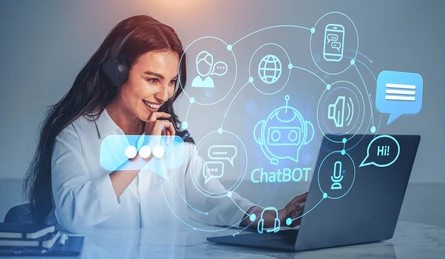
Over time, chatbot algorithms have become capable of more complex rule-based programming and even natural language processing, allowing them to express customer questions in a conversational manner. This has given rise to a new type of chatbot equipped with machine learning that is context-aware and continuously optimizes its ability to correctly process and predict queries as it is exposed to more human language. .
Modern AI chatbots use natural language understanding (NLU) to identify the meaning of free-form user input and solve everything from typos to translation issues. Advanced AI tools map the specific “intent” the user wants the chatbot to take action on and use conversational AI to craft an appropriate response. These AI technologies leverage both machine learning and deep learning (different, albeit subtle, elements of AI) to develop a more detailed knowledge base of questions and answers derived from user interactions. This refinement, taking advantage of recent advances in large-scale language models (LLM), has resulted in improved customer satisfaction and made chatbot applications more versatile.
Chatbots vs. AI chatbots vs. virtual agents
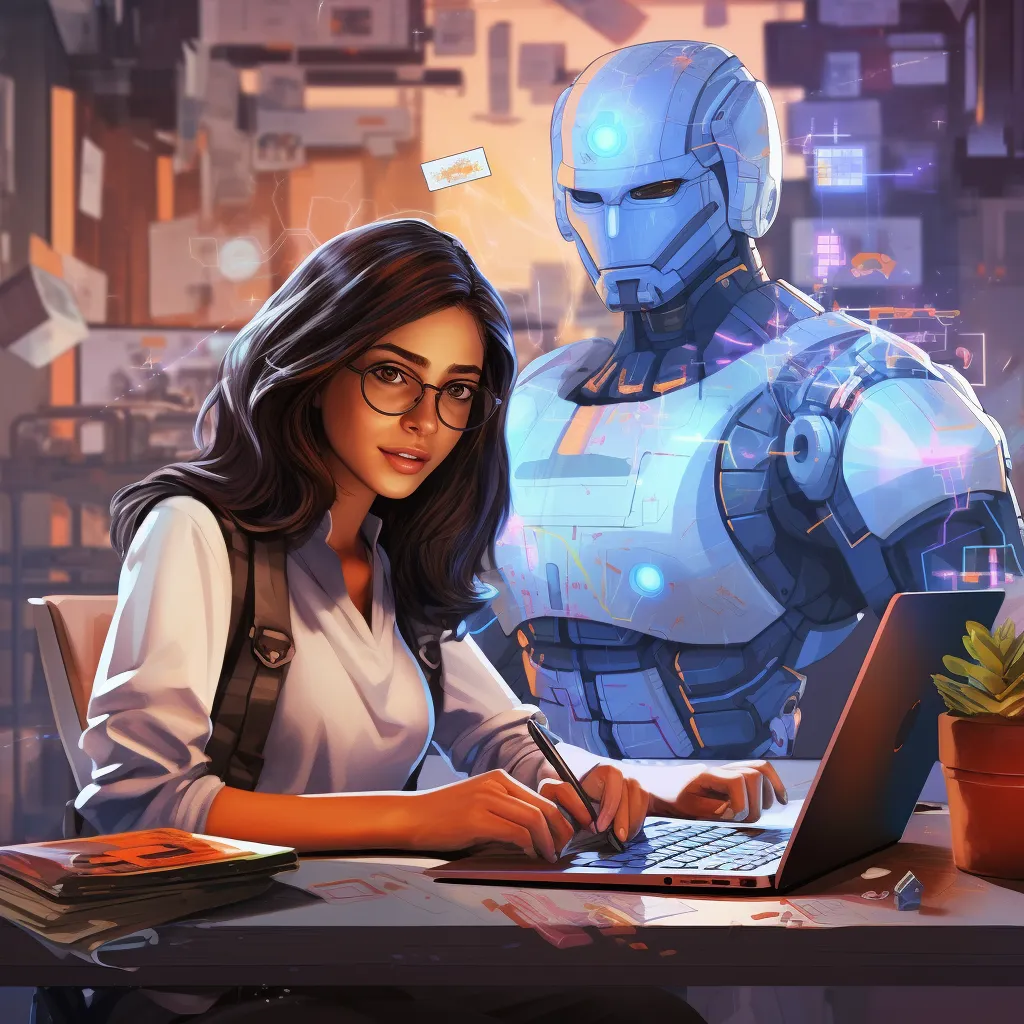
The ability of AI chatbots to accurately process natural human language and automate personalized services offers clear benefits for both businesses and customers. Improve customer engagement and brand loyalty
Before chatbots, every customer question, concern, or complaint, whether big or small, required a human response. Naturally, timely or urgent customer issues may arise after business hours, on weekends, or on holidays. However, staffing customer service departments to meet unpredictable demand around the clock is an expensive and difficult endeavor.
Today, chatbots can manage customer interactions continuously, 24/7, while continuously improving the quality of responses and controlling costs. Chatbots automate workflows and free up employees from repetitive tasks. Chatbots can eliminate long wait times for phone-based customer support as well as long wait times for email, chat, and web-based support. This is because it is easily available to any number of users simultaneously. This is a great user experience, and satisfied customers are more likely to show brand loyalty.
Reduce costs and improve operational efficiency
Staffing your customer support center around the clock is expensive. Similarly, the time spent answering repetitive questions (and the training required to make those answers consistent) is costly. Many foreign companies offer outsourcing of these functions, but doing so incurs significant costs and reduces control over the brand’s interactions with customers.
However, chatbots can answer questions 24/7. You can provide a new first line of support, provide supplemental support during peak periods, or reduce tedious, repetitive queries so human agents can focus on more complex issues. Chatbots can help reduce the number of users requiring human assistance, allowing businesses to more efficiently increase staffing to respond to increased demand or after-hours requests.
Generate leads and satisfy customers
Chatbots can help generate sales leads and improve conversion rates. For example, a customer browsing a product or service website may need to ask questions about various features, characteristics, or plans. Chatbots can provide these answers on the spot, helping customers move toward a purchase. For more complex purchases with multi-step sales funnels, chatbots can also ask lead qualification questions and connect customers directly to trained sales agents.
More related topics about artificial intelligence. You should know
- What is artificial intelligence (AI)? How many types of AI are there, and how many courses are in AI?
- What is artificial intelligence? Definition, top 10 types and examples
- What is natural language processing?
- What is a chatbot? Definition, Working, Types, and Examples
- What is artificial intelligence? Definition, top 10 types and examples
- What is deep learning?
- Top 10 Best Topics for Research in Artificial Intelligence
Types of chatbot
Hundreds of thousands of companies around the world are developing different types of chatbots to improve customer service. In this section, we will discuss the different types of chatbots, their uses, and which chatbot software will be most beneficial for your company.
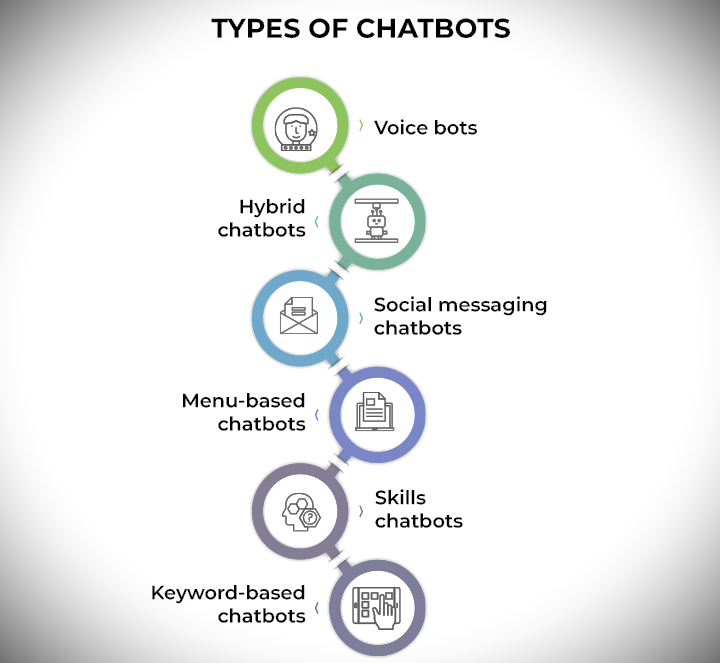
1. Voice Bot
Voicebots are voice-to-text and text-to-voice communication channels that leverage AI and natural language understanding (NLU). AI technology helps identify key audio cues and determine the best conversation response. A text-to-speech (TTS) engine then converts the message into audio or speech to complete the conversation.
These bots are programmed to understand speech and complete the entire response process like a human. Voice assistants or voice chatbots offer a sophisticated communication model that can be readily implemented into various customer service tools such as interactive voice response (IVR), self-service, and online knowledge bases.
2. Hybrid Chatbot
Hybrid chatbots are a harmonious blend that combines the best of both chatbots and live chat. Customer service representatives are available via live chat to answer customer questions that are too complex or sensitive for automation alone.
The AI component of a chatbot replicates the conversation based on how it is programmed and what the conversation needs. Hybrid chatbots, on the other hand, initiate automated chat conversations and attempt to resolve user queries as quickly and easily as possible. If it is not working as expected, a customer service representative can always intervene in subject areas where the chatbot is unable to complete the task.
3. Social Messaging Chatbot
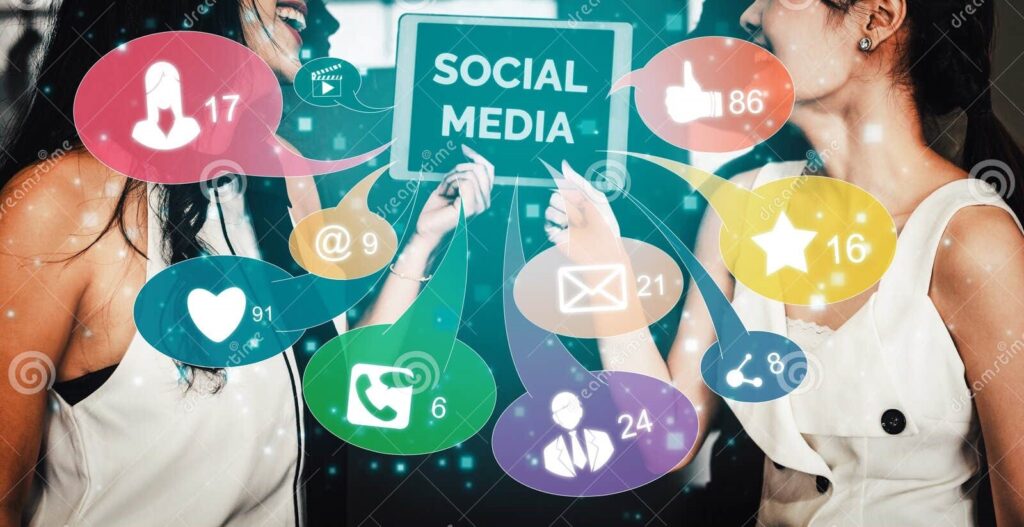
The rise of new social media interfaces has enabled organizations to deploy AI algorithms across all their customers’ preferred messaging platforms. This includes Facebook Messenger, Twitter, and Instagram, as well as messaging apps like WhatsApp and WeChat. This creates a better online experience for your customers and increases engagement with your business without increasing the workload on the contact center.
4. Menu-Based Chatbot
The most basic type of chatbot in use today is based on menu-driven navigation. In most cases, these chatbots follow a fixed decision tree that is presented to consumers as clickable buttons. These chatbots (similar to the automated dial pad menus on our phones that we regularly use) ask users to select multiple options and then click on the appropriate option to arrive at the final solution. I ask you to do so.
While these chatbots are sufficient to address the common questions that make up most support requests, they may fall short in more complex scenarios. With too many elements or too much specialization, menu-based chatbots can prevent users from reaching the right response. It’s also important to note that menu-based chatbots take the longest to provide real value to consumers but are simple and affordable to get started.
5. Skill Chatbot
Skilled chatbots are another type of bot whose functionality can be enhanced by using predefined skill software to perform specific tasks. For example, a chatbot may be able to provide weather information, turn off lights in a room when connected to a smart appliance, or order groceries online. Access to the Skills source code allows developers to create and integrate their own Skills chatbots. On other platforms too.
6. Keyword-Based Chatbot
Unlike menu-based chatbots, keyword-based chatbots are able to listen to what visitors type and respond correctly. These chatbots use customizable keywords and NLP to detect action triggers in conversations and understand how to respond appropriately to consumers. However, if there are a large number of similar inquiries, these chatbots may not be able to respond. Chatbots can start to become unstable if keywords are repeated in a large number of related queries.
Chatbots that combine keyword detection with menu- or button-based navigation are becoming increasingly popular. If the keyword recognition feature fails or if the user needs additional help finding the answer, such chatbots provide the user with the option to enter commands directly through clickable navigation buttons. Meat. This is an effective solution if your bot is unable to detect the keywords in the given input.
7. Rule-Based Chatbot
Rules-based chatbots are ideal for businesses that already know what types of inquiries their customers ask. Chat flows are built using if/then logic and require you to first establish the chatbot’s language requirements. Terms of evaluation of words, word structure, synonyms, etc. are important principles of their functioning. If the incoming inquiry falls within these parameters, the customer will receive prompt assistance.
It is important to note that it is the responsibility of the developer to cover all permutations and combinations of questions as much as possible. Otherwise, the chatbot will not be able to understand and respond to the consumer.
8. Contextual Chatbot Powered by AI
Contextual chatbots understand the context of the chat and can determine the true meaning of the user’s inquiry. You can also remember past conversations and use that information to stay relevant when interacting with repeat customers. Contextual bots ensure that repeat users get a consistent experience. Additionally, it maintains user intent information collected across multiple platforms and channels, ensuring that the context of the interaction matches consumer needs at every touchpoint.
Contextual chatbots are connected to a site or app’s central database, typically a customer relationship management (CRM) system or customer data platform (CDP). This allows you to get important information about the person you’re chatting with, such as their name, location, and purchase history.
9. Chatbot Support
A support chatbot is a conversation system designed for the sole purpose of providing customer support and post-purchase service. Unlike social media and website bots, we do not share offers, promotions, or other customer engagement content. This type of chatbot is usually found in self-service portals or online documentation where users can get support and assistance. Support chatbots are widely used for internal purposes, such as answering HR queries, raising IT tickets, and filing employee documents.
10. Transaction Bot
Transactional chatbots can help enhance your organization’s sales and marketing efforts, including scheduling appointments, generating leads, and collecting payments. Users can interact with chatbots and transact directly without human intervention.
Its biggest advantage is that it enables transactions and runs the business 24/7. Therefore, transactional chatbots are different from other types of bots, such as informational bots and support bots. Its focus is to complete transactions and streamline the user experience by providing quick and easy channels for the same purpose. It is designed to handle a small number of specific tasks.
11. No-code or low-code chatbot
Chatbots have traditionally been designed and developed using code to create decision trees and use AI and machine learning (ML) algorithms to power the technology. Every programming language has a web API that you can use to create a chatbot. In addition to PHP and Node.js, several other libraries that enable Python or Java are used in the most common deployments.
However, recent advancements have made it possible for organizations to use chatbots without any coding required. It allows you to create and configure bots using a graphical user interface (GUI), leading to faster application delivery and faster value generation. No-code deployments are suitable for chatbots that collect information or facilitate human interaction. In contrast, low-code chatbots are ideal for organizations that need to add unique functionality while reducing development efforts.
Top 5 Examples of Chatbots in 2025
You can find examples of chatbot implementation in almost every large company with a digital presence. Here are five examples of key ways to use chatbot technology in specific industries and use cases.
1. Use a lead generation chatbot on your website
These chatbots use conversational technology to obtain information about website visitors to assist customers in the purchasing process or identify potential customers. They help users navigate the many options and allow businesses to actively engage with prospects and prevent them from leaving the website. Lead generation chatbots are effective in building relationships with website visitors and engaging them 24/7.
2. Chatbot for providing information and submitting applications in the insurance sector
Insurers can use chatbots to connect with consumers, provide quotes for insurance policies, collect premiums, upsell and cross-sell products and services, and much more. This can be done rule-based or using artificial intelligence and natural language processing. Additionally, the insurance and financial services sectors have been heavily dependent on human agents. Chatbots allow insurance companies to reach a wider audience and make it easier for customers to process claims.
3. Virtual assistant to find information on smartphone
Many smartphone users rely on voice assistants like Google Now, Cortana, Siri, and Alexa to look up information on a regular basis. Virtual assistants listen and respond to you and perform tasks like sending emails, performing searches, launching apps, and providing weather information. One main benefit is that you can use your voice to control virtually anything through voice-to-text and text-to-voice options.
4. Customer Support Chatbot for E-Commerce Applications
Chatbots are changing the e-commerce industry, allowing merchants to provide a better shopping experience. These push businesses as part of a broader transformation to simplify the broader matrix of complex relationships, automate operations, and deploy technology to support customer care. E-commerce apps use chatbots to keep the customer experience completely online and reduce the need for face-to-face interactions.
5. Bill Payment Bots by Utility Companies
Chatbots allow utilities to provide on-demand customer support without relying solely on a team of physical customer service agents. This has become especially important during the coronavirus pandemic. Chatbots have a huge impact on bill payments. When a customer enters their service ID, Bit automatically retrieves their latest invoice. The transaction system allows customers to pay their dues directly on the app without visiting the utility company office. This ensures seamless service and timely payments.
Chatbots have now become an essential part of business operations, streamlining both internal and customer interactions. A basic chatbot uses a simple rule-based navigation system to resolve customer queries. More complex systems rely on AI, ML, and NLP to understand the customer’s unique context and provide effective solutions. Organizations can integrate chatbots with existing digital platforms and contact center solutions to provide high-quality support to large numbers of customers.
FAQs
What is a chatbot used for?
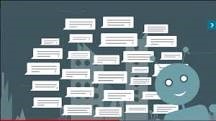
Chatbots are conversational tools that perform routine tasks efficiently. People like them because they help them get through those tasks quickly so they can focus their attention on high-level, strategic, and engaging activities that require human capabilities that cannot be replicated by machines.
Who created the chatbot?
ChatGPT was created by OpenAI, an AI research company. It started as a nonprofit company in 2015 but became for-profit in 2019. Its CEO is Sam Altman, who also co-founded the company.
What is the full form of GPT?
The GPT stands for “Generative Pre-trained Transformer,” which refers to how ChatGPT processes requests and formulates responses. ChatGPT is trained with reinforcement learning through human feedback and reward models that rank the best responses.
Why is it called a bot?

A ”bot’—short for robot—is a software program that performs automated, repetitive, pre-defined tasks. Bots typically imitate or replace human user behavior. Because they are automated, they operate much faster than human users.
What is chatbot stands for?
At the most basic level, a chatbot is a computer program that simulates and processes human conversation (either written or spoken), allowing humans to interact with digital devices as if they were communicating with a real person.
Why were chatbots created?
Digitization is transforming society into a “mobile-first” population. As messaging applications grow in popularity, chatbots are increasingly playing an important role in this mobility-driven transformation. Intelligent conversational chatbots are often interfaces for mobile applications and are changing the way businesses and customers interact.
Chatbots allow businesses to connect with customers in a personal way without the expense of human representatives. For example, many of the questions or issues customers have are common and easily answered. That’s why companies create FAQs and troubleshooting guides. Chatbots provide a personal alternative to a written FAQ or guide and can even triage questions, including handing off a customer issue to a live person if the issue becomes too complex for the chatbot to resolve. Chatbots have become popular as a time and money saver for businesses and an added convenience for customers.
How chatbots have evolved
The origin of the chatbot arguably lies with Alan Turing’s 1950s vision of intelligent machines. Artificial intelligence, the foundation for chatbots, has progressed since that time to include super intelligent supercomputers such as IBM Watson.
The original chatbot was the phone tree, which led phone-in customers on an often cumbersome and frustrating path of selecting one option after another to wind their way through an automated customer service model. Enhancements in technology and the growing sophistication of AI, ML, and NLP evolved this model into pop-up, live, onscreen chats. And the evolutionary journey has continued.
With today’s digital assistants, businesses can scale AI to provide much more convenient and effective interactions between companies and customers—directly from customers’ digital devices.
Common chatbot use
Chatbots are frequently used to improve the IT service management experience, which focuses on self-service and automating processes offered to internal staff. With an intelligent chatbot, common tasks such as password updates, system status, outage alerts, and knowledge management can be readily automated and made available 24/7, while broadening access to commonly used voice and text based conversational interfaces.
On the business side, chatbots are most commonly used in customer contact centers to manage incoming communications and direct customers to the appropriate resource. They’re also frequently used for internal purposes, such as onboarding new employees and helping all employees with routine activities including vacation scheduling, training, ordering computers and business supplies, and other self-service activities that don’t require human intervention.
On the consumer side, chatbots are performing a variety of customer services, ranging from ordering event tickets to booking and checking into hotels to comparing products and services. Chatbots are also commonly used to perform routine customer activities within the banking, retail, and food and beverage sectors. In addition, many public sector functions are enabled by chatbots, such as submitting requests for city services, handling utility-related inquiries, and resolving billing issues.
How do chatbots using rules-based processes work?
Rules-based chatbot software performs pre-programmed behaviors based on “playbooks” you create on the user interface’s backend module. Like a digital assistant, rules-based chatbot technology can behave in a certain way based on click activities and simple event triggers like a “yes” or a “no” input. It may also detect a specific keyword or combination of phrases (but only when there is an exact match).
For instance, you could program a rules-based chatbot to answer not only if someone chooses “black” or “white,” but also if they say “I want a black item”—the chatbot’s backend module will match the term black with a preconfigured rule.
How do AI-powered decision-making chatbots work?
Artificial intelligence chatbots use AI and natural language processing (NLP) technology to improve their ability to recognize sentence structure, interpret knowledge, and answer questions.
Instead of relying on pre-programmed responses, AI chatbots first determine what the customer or user is saying. Then, once it understands what the user is looking for, the chatbot will provide the answer it thinks is right based on the available data. The machine learns the “correct” response by analyzing correct and incorrect responses over time.
Chatbots with AI-powered decision-making mechanisms can be highly effective if they have a deep understanding of an organization, its customers, and their context. This feature is primarily used by large enterprises, such as e-commerce and other high-volume businesses that require scale.
How does a chatbot with live agent interaction work?
Live chat is a type of chat system that resides on a web page or mobile application and serves as the consumer’s point of contact with the support team or contact center. Using this mechanism, chatbots have built-in routing functionality to assign discussions in real time.
When a customer needs to communicate with someone on your team, the chatbot scans the agent’s availability and routes the discussion request accordingly. It connects customers with someone who can help solve their problem—an agent who has the right skills and knowledge. The chatbot alerts the agent when a customer makes an inquiry and provides the customer with the agent’s details, such as name and wait time.
As you can see, these processes make relatively little sense given the endless advancements in chatbot technology today and its easy accessibility for both users and developers.
follow me : Twitter, Facebook, LinkedIn, Instagram

8 thoughts on “Ultimate Guide: What is a Chatbot and How It Works?”
Comments are closed.